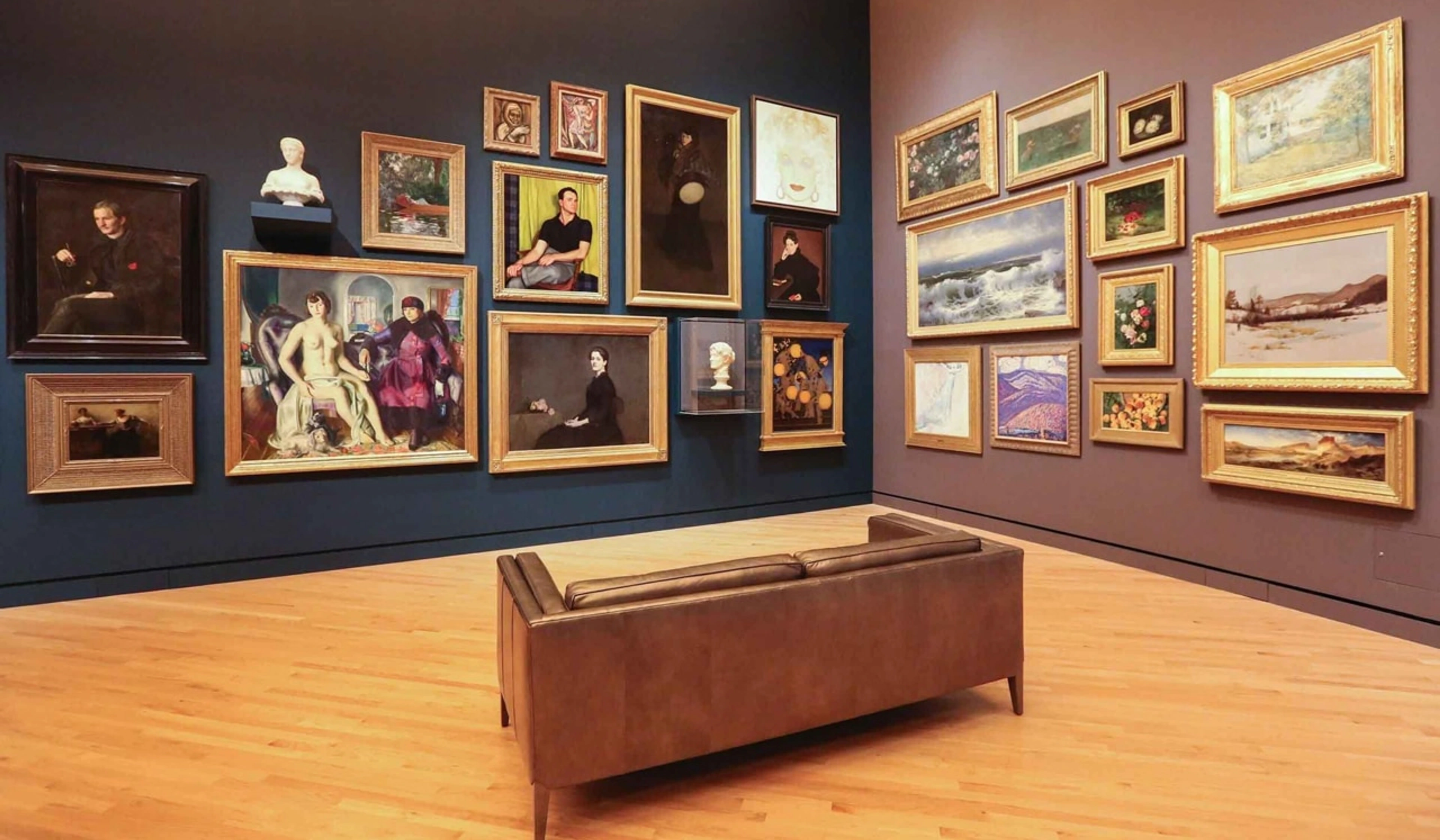
Art About Dreams: Exploring the Subconscious on Canvas and Beyond
Dive into art inspired by dreams and the subconscious. Explore its history, why artists tap this source, practical ways to create your own dreamlike art, and how to find pieces that resonate with your inner world.
Art About Dreams: Where the Canvas Meets the Subconscious
Dreams. Ah, dreams. Those weird, wonderful, sometimes terrifying, often nonsensical journeys our minds take us on when we're offline. I've always been fascinated by them, probably because mine are usually a chaotic mix of mundane tasks and utterly bizarre scenarios. One minute I'm trying to find my keys (classic!), the next I'm having a conversation with a talking badger about the merits of abstract expressionism. Seriously. It's like my brain is having a party without inviting my conscious, logical self.
Just last week, I had a dream where I was trying to paint a portrait, but every time I added a brushstroke, the face would melt and reform into something else – a landscape, then a talking teapot, then back to a distorted face. It was frustrating, yes, but also visually stunning and utterly illogical in a way that stuck with me. It made me think, that's the essence of the dream world – constant transformation, unexpected connections, a logic all its own. And that's what I try to capture in my own art sometimes, that feeling of shifting reality. It's a key part of my own artist's journey.
It's no wonder artists have been drawn to this realm for centuries. How do you capture something so fleeting, so personal, so utterly illogical? That's the magic of art about dreams. It's not just about depicting what you saw; it's about conveying the feeling, the atmosphere, the strange logic of the subconscious. In this article, we'll journey through the rich history of dream-inspired art, explore the profound reasons why artists turn to this mysterious source, delve into practical ways you can create your own pieces that resonate with the dream world, and even touch on how to find and collect art that speaks to your inner landscape.
The Science (Briefly) Behind the Dream State
Before we dive into the art, let's touch briefly on the science. While the exact purpose of dreams is still debated, we know they primarily occur during REM (Rapid Eye Movement) sleep. During this phase, brain activity increases, resembling wakefulness, but the body is largely paralyzed. Theories suggest dreams play a role in memory consolidation, emotional processing, and even creative problem-solving. This biological basis for a state of altered reality and intense, often illogical, imagery only makes the artistic fascination with dreams more compelling, doesn't it? It's like our brains are hardwired for surrealism every night.
It's worth noting that while REM dreams are often the most vivid and narrative, dreams also occur during non-REM sleep, though they tend to be less visually intense or story-driven. There are also the fascinating transitional states: hypnagogic (falling asleep) and hypnopompic (waking up) hallucinations. These aren't technically dreams but can produce incredibly vivid, often abstract or fragmented imagery and sensations that are distinct from narrative dreams and can be a rich, unfiltered source of visual inspiration for artists, bypassing the conscious mind entirely. These states are sometimes associated with specific brainwave patterns, like alpha and theta waves, which are linked to relaxed, creative, or meditative states – perhaps explaining why the imagery feels so raw and potent. The subjective, fragmented, and often non-linear experience of dreaming itself, the feeling of being in a shifting reality, is as much an artistic challenge and inspiration as the specific images it produces.
The Dream World on Canvas: A Journey Through History
The connection between art and dreams isn't solely a modern phenomenon. Long before the term 'Surrealism' was coined, artists explored the realms of imagination, fantasy, and the sublime, often touching upon dreamlike states. In fact, the link goes back much further, woven into the fabric of human culture across continents and millennia. Let's take a look at how this fascination has manifested throughout history.
Ancient Civilizations
From the intricate hieroglyphs of ancient Egypt depicting dreams as divine messages or omens, to the detailed tomb paintings that aimed to capture the essence of the afterlife – a state often perceived as dreamlike or accessed through altered states – dreams held significant cultural and artistic weight. Egyptian dream books, like the Chester Beatty Papyrus, recorded and interpreted dreams, influencing not just daily life but also funerary art and religious imagery. Think of the detailed depictions of the journey to the underworld in tombs, which often feel like visual representations of a profound, dreamlike transition. Across Mesopotamia, Greece, and Rome, dreams were recorded, interpreted, and sometimes influenced artistic narratives, seen as windows into the future or the will of the gods. Consider Greek temple art depicting dream visions or Roman sarcophagi incorporating mythological scenes that echo dream narratives, like the myth of Endymion, who was granted eternal sleep by Zeus, a state often linked to prophetic dreams. Even in ancient China and India, dream interpretation played a significant role in philosophy, religion, and directly influenced symbolic art and literature, with intricate mandalas or narrative scrolls sometimes reflecting visionary or dreamlike states of consciousness. The cultural significance of dreams as sources of prophecy, healing, or divine guidance in these societies directly fueled their artistic representation, appearing in everything from monumental architecture to small amulets and ritual objects.
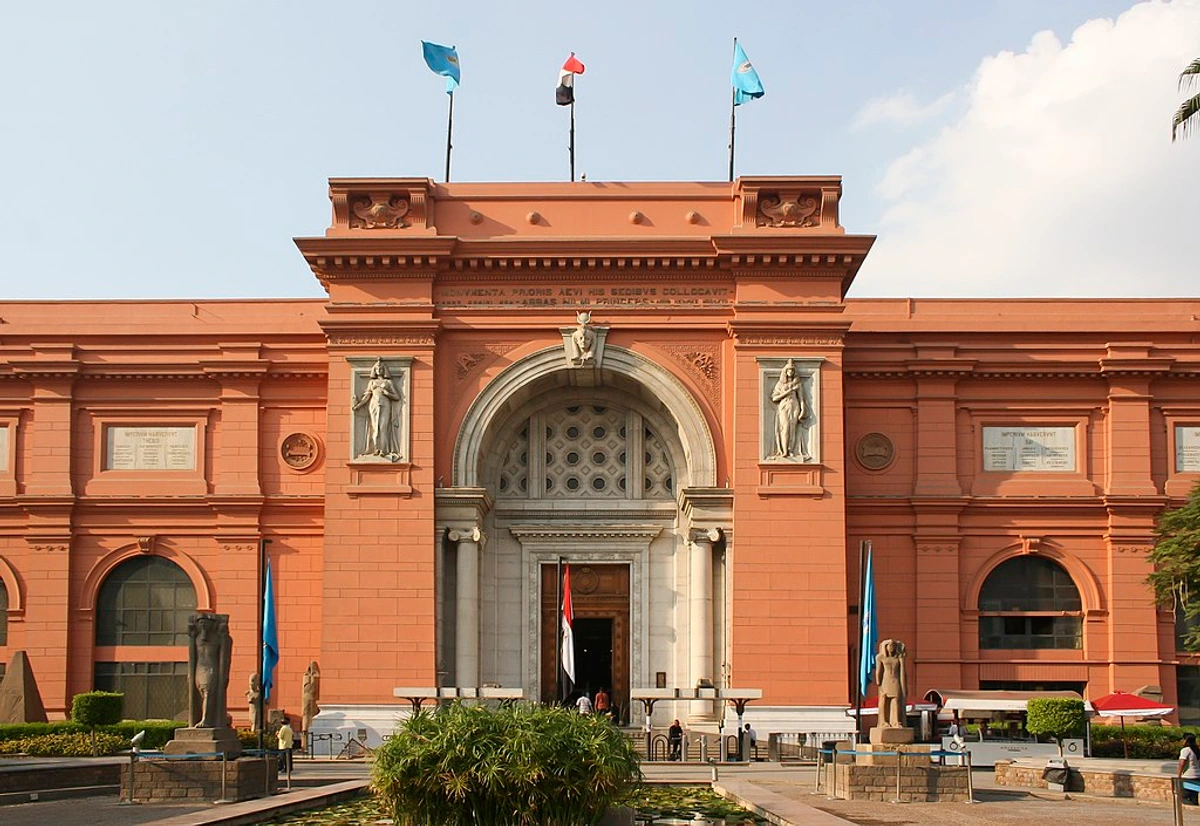
Indigenous Cultures
Around the world, indigenous cultures have rich traditions of dream symbolism influencing their art. From the intricate carvings and masks used in spiritual ceremonies to storytelling and painting, dreams are often seen as a vital connection to the spiritual world, ancestral knowledge, and the collective unconscious. The symbols and narratives that emerge in dreams are directly translated into visual forms, serving as maps of the inner world and guides for the community. Australian Aboriginal 'Dreamings' or 'Dreamtime' art, for instance, visually represents the ancestral beings and their journeys, often accessed or understood through dream states. The intricate dot paintings and symbols are not just decoration but a visual language derived from this deep connection. Native American cultures, such as the Ojibwe with their dream catchers or the Iroquois with their dream-inspired masks used in healing ceremonies, incorporate dream visions into mask designs, totem poles, and ceremonial objects. What does it mean that this fascination is so universal? It suggests something fundamental about the human experience – a shared recognition of the power and mystery of the dreaming mind and its connection to broader spiritual or collective realms. These artistic expressions are often deeply integrated into daily life and ritual, serving functions far beyond mere aesthetics.
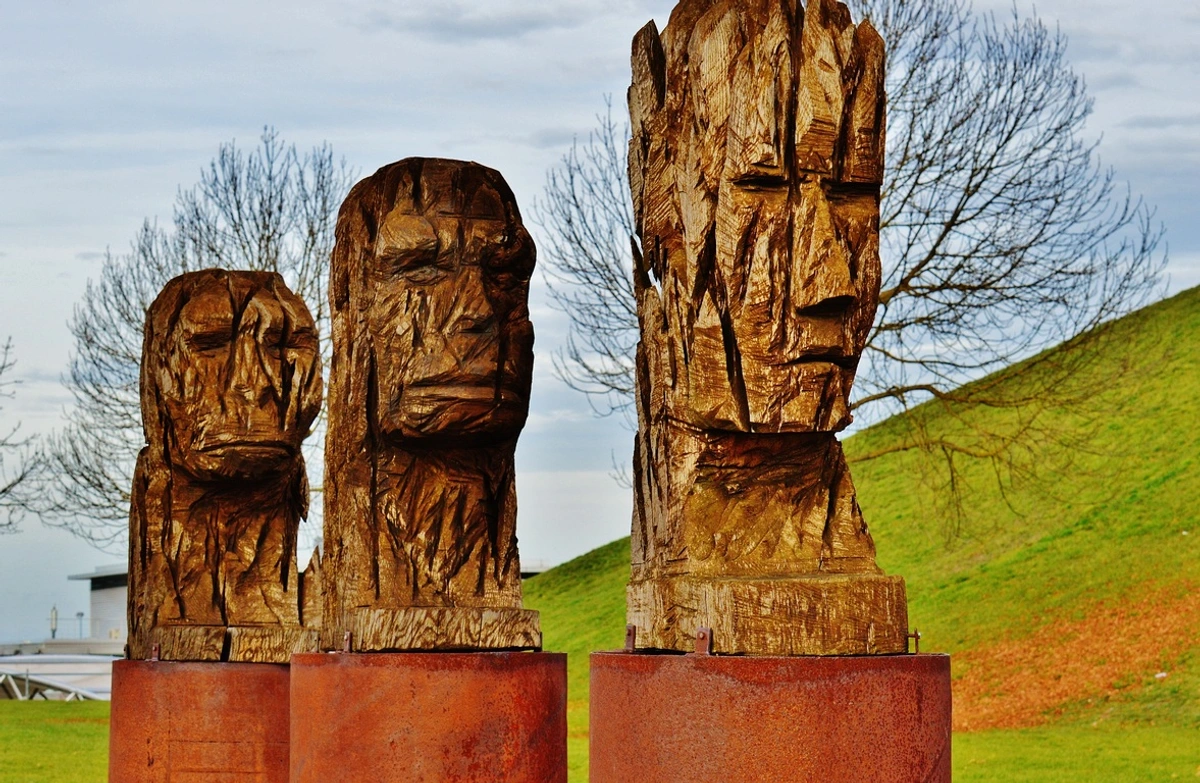
Medieval and Renaissance Echoes
While not explicitly focused on dreams as a primary source, the Medieval and Renaissance periods sometimes produced art that resonates with dream logic through its fantastical elements, allegorical complexity, or depictions of altered states. Illuminated manuscripts, for example, occasionally feature bizarre creatures or hybrid forms that feel pulled from a subconscious realm, particularly in marginalia or depictions of hell and temptation. Think of the unsettling, hybrid creatures found in the borders of the Luttrell Psalter or the Bosch-like grotesques in some later medieval altarpieces. The grotesque sculptures and carvings found in churches can also evoke a sense of the uncanny or nightmarish. Artists exploring religious visions or allegorical narratives sometimes created scenes where scale, perspective, or the combination of elements defied waking reality, echoing the non-linear nature of dreams. Consider the strange, symbolic landscapes in some early Renaissance paintings or the unsettling imagery in depictions of hell or temptation, like those by Hieronymus Bosch (though he's often placed slightly later, his work embodies this pre-Surrealist dream logic). These works, while serving different cultural purposes, demonstrate an enduring human fascination with the irrational and the visually unexpected, paving a subtle path towards later explorations of the subconscious.
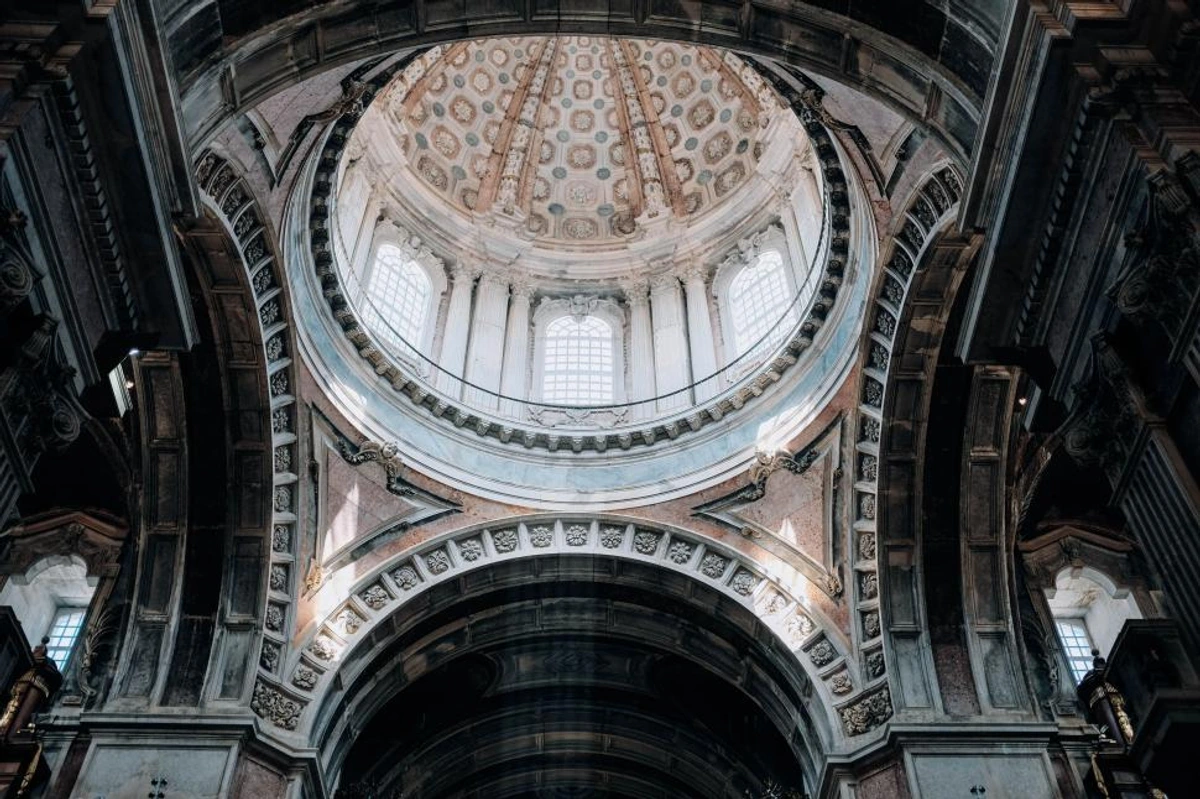
Pre-Surrealist Explorations
Even before the formal movements, individual artists delved into the irrational and dreamlike. Hieronymus Bosch's fantastical and nightmarish landscapes, filled with bizarre creatures and unsettling scenes, feel like direct translations of fever dreams onto canvas. His work, like The Garden of Earthly Delights, is a visual explosion of the subconscious, centuries ahead of its time. Looking at Bosch's bizarre creatures always makes me wonder what his dreams were like – probably far more interesting than my talking badger. William Blake's visionary art, often illustrating his own mystical experiences and poems, creates a unique visual language that blurs the line between reality and an inner, dreamlike world. Francisco Goya's Caprichos etchings, particularly those exploring themes of superstition, ignorance, and the grotesque, often possess a dark, satirical, and distinctly dreamlike quality, famously captured in "[The Sleep of Reason Produces Monsters]". Artists associated with Symbolism, such as Odilon Redon and Gustave Moreau, also explored dreamlike imagery and complex symbols to access deeper truths, directly tapping into a visual language akin to dreams before the Surrealists formally codified it. These artists weren't explicitly painting dreams as the Surrealists would, but they were certainly tapping into the same well of the irrational and the subconscious, paving the way for later explorations.
Romanticism
Moving into more recent history, movements like Romanticism, with its focus on intense emotion, individualism, the power of nature, and the glorification of the past, sometimes ventured into the fantastical and nightmarish. While Henry Fuseli's "[The Nightmare]" is a classic example of depicting sleep paralysis, other Romantic artists explored dreamlike states through allegorical landscapes and journeys into the sublime. Thomas Cole's series "[The Voyage of Life]," for instance, depicts a journey through different stages of life on a river, moving from a cave of childhood to the open sea of old age. These allegorical landscapes, filled with symbolic imagery and dramatic atmosphere, can be interpreted as visual representations of the soul's journey, akin to a profound dream or vision. This era began to prioritize subjective experience, a crucial step towards the later focus on the subconscious.
![]()
Symbolism
Emerging in the late 19th century, Symbolism explicitly used dreamlike imagery and complex symbols to explore ideas and emotions that couldn't be expressed through realism. Artists like Odilon Redon created haunting, ethereal works filled with strange creatures and floating eyes, directly tapping into a visual language akin to dreams. His series of charcoal drawings and lithographs known as the 'Noirs' are particularly evocative of the subconscious, filled with mysterious figures and unsettling forms that feel pulled directly from a dream state. Gustave Moreau also delved into mythological and biblical themes with a Symbolist approach, creating dense, often unsettling scenes that feel steeped in a dream logic of their own, sometimes based on his own visionary experiences. Other Symbolists like Gustav Klimt incorporated intricate patterns and symbolic figures into his opulent works, often creating a sense of a rich, internal world, while Edvard Munch's psychological landscapes and portraits, like "[The Scream]", visually manifest intense inner states that feel akin to nightmares or profound anxiety dreams. Their work often feels like stepping into a half-remembered, potent dream, full of hidden meanings. Symbolism served as a crucial bridge, laying the groundwork for the later, more explicit exploration of the subconscious by the Surrealists.
![]()
Surrealism
But when you think of art and dreams, one movement immediately springs to mind: Surrealism. Born from the ashes of Dada and heavily influenced by Freud's work on the unconscious, the Surrealists were obsessed with unlocking the power of dreams.
They believed that the unconscious mind held a deeper, more authentic reality than our waking lives. Dreams were the direct pipeline to this reality. Artists like Salvador Dalí, René Magritte, and Yves Tanguy sought to depict the dream world with startling, often unsettling, clarity.
The Surrealists and the Unconscious
Heavily influenced by Sigmund Freud's groundbreaking work, particularly "[The Interpretation of Dreams]" (1899), Surrealists saw dreams not as random noise, but as a coded language of the unconscious mind. They believed that by tapping into this realm, they could access a purer, more authentic reality, free from the constraints of logic and societal norms. Carl Jung's concept of the collective unconscious and archetypes also resonated, suggesting that certain symbols and themes in dreams held universal meaning, providing a rich vocabulary for artists to tap into shared human experiences on a primal level. It's also worth noting that some artists exploring altered states, including some associated with Surrealism or later movements, were influenced by psychoactive substances, though this is a complex and sensitive topic in art history.
Here's a quick look at how some key Surrealists approached the dream world:
Artist | Approach to Dreams | Key Examples |
|---|---|---|
| Salvador Dalí | Hyper-realistic depiction of bizarre juxtapositions | "The Persistence of Memory", "The Enigma of Desire" |
| René Magritte | Uncanny subversion of the normal, visual paradoxes | "Time Transfixed", "Golconda", "The Son of Man" |
| Yves Tanguy | Abstract, biomorphic forms in desolate landscapes | The Ram, The Spectral Cow, Mama, Papa is Wounded! |
Dalí painted his dreams with meticulous, almost photographic detail, making the impossible seem real. Melting clocks ("The Persistence of Memory"), bizarre landscapes, strange hybrid creatures ("The Enigma of Desire") – his work feels like stepping directly into a fever dream. It's unsettling, yes, but also strangely compelling. You can't look away. His ability to render the utterly illogical with such technical precision is what makes his dreamscapes so potent and disturbing.

Magritte, on the other hand, took everyday objects and placed them in unexpected contexts, creating a sense of uncanny familiarity. A train coming out of a fireplace ("Time Transfixed"), men in bowler hats raining from the sky ("Golconda"), an apple obscuring a face ("The Son of Man") – his work makes you question reality itself, much like a dream does. It's less about the wild imagery of Dalí and more about the subtle subversion of the normal, making the familiar feel alien and dreamlike. This deliberate disruption of expectation taps into the same psychological space as the uncanny valley, where something almost familiar feels deeply unsettling.
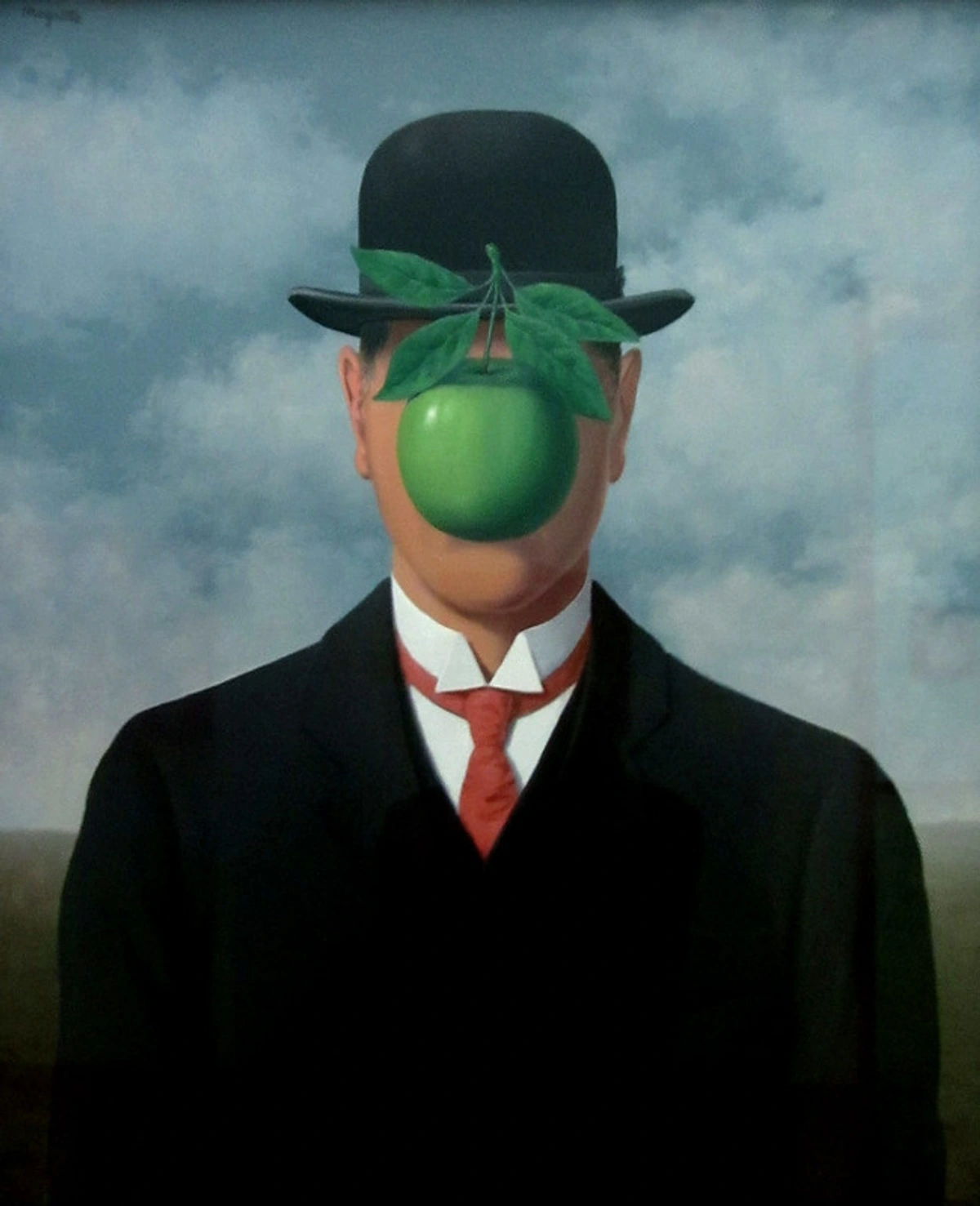
Tanguy's desolate, alien landscapes populated by strange, biomorphic forms feel like exploring an unknown planet within the mind. His work is pure, unadulterated dream logic, where gravity and form are merely suggestions. Looking at a Tanguy painting feels like drifting through a silent, internal space where the rules of physics are suspended.
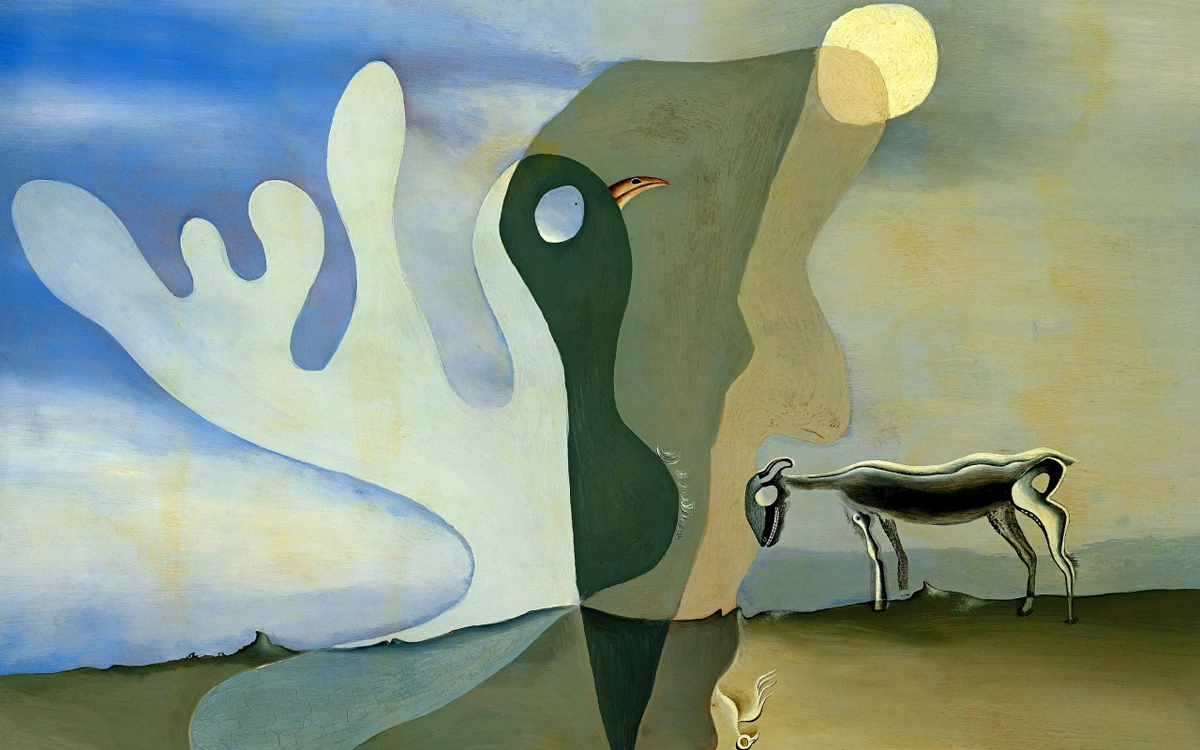
Beyond depicting dreams, Surrealists also developed techniques to access the unconscious mind directly. Automatism, for instance, involved creating art without conscious thought, letting the hand move freely, much like automatic writing. Think of it like doodling without a plan – you're bypassing the logical, planning part of your brain and letting whatever is bubbling up from below come out. The key was to mimic the unfiltered, non-linear flow of the dream state itself, allowing the subconscious to dictate the creative process without conscious interference. Artists like André Masson used automatic drawing to create intricate, tangled lines that seem to emerge directly from the subconscious, often revealing hidden figures or forms. Techniques like exquisite corpse (a collaborative drawing game where each person adds to a drawing without seeing the previous additions, resulting in bizarre composite figures) or frottage (rubbing a surface to create texture, allowing unexpected forms to emerge) were also used to bypass the rational mind and tap into spontaneous imagery. Exquisite corpse is like a visual game of telephone, resulting in delightfully weird creatures, while frottage is like finding faces in clouds or textures on walls – letting chance reveal hidden forms.
It's also important to note that Surrealism wasn't just a boys' club. Female artists like Leonora Carrington and Remedios Varo created incredibly rich, complex, and deeply personal works drawing heavily on their inner worlds, dreams, and mythology, often featuring fantastical creatures, alchemical symbolism, and narrative depth. Carrington's work, like Self-Portrait (Inn of the Dawn Horse), is filled with personal symbols and mythical creatures that feel deeply rooted in a dreamlike, internal narrative. Varo's intricate paintings, such as Sympathy (The Anguish of Waiting), depict surreal, often solitary figures engaged in mysterious activities within fantastical architectural spaces, evoking a sense of quiet, introspective dream logic. Their work offers a unique, often more narrative and introspective, perspective on the dream landscape, sometimes feeling like illustrated fairy tales for adults, steeped in personal mythology.
If you want to dive deeper into this fascinating movement, check out my ultimate guide to Surrealism.
Beyond Surrealism: Dreams in Other Movements and Styles
While Surrealism is the most obvious connection, the influence of dreams and the subconscious pops up elsewhere.
Symbolism, as mentioned, laid important groundwork with its focus on evocative imagery and subjective experience.
Even in Abstract Expressionism, the focus on spontaneous creation and tapping into inner feelings can be seen as a way to access a dreamlike state of mind. Techniques like automatism, directly borrowed or adapted from the Surrealists, were used by artists like Jackson Pollock in his drip paintings, attempting to bypass conscious control and let the subconscious guide the process. While the Surrealists sought to depict subconscious imagery, AbEx artists often aimed to express the feeling or energy of the inner state through gesture and color, much like the raw emotional residue of a dream. It's about letting the hand move freely, bypassing the logical filter, much like the mind does in a dream.
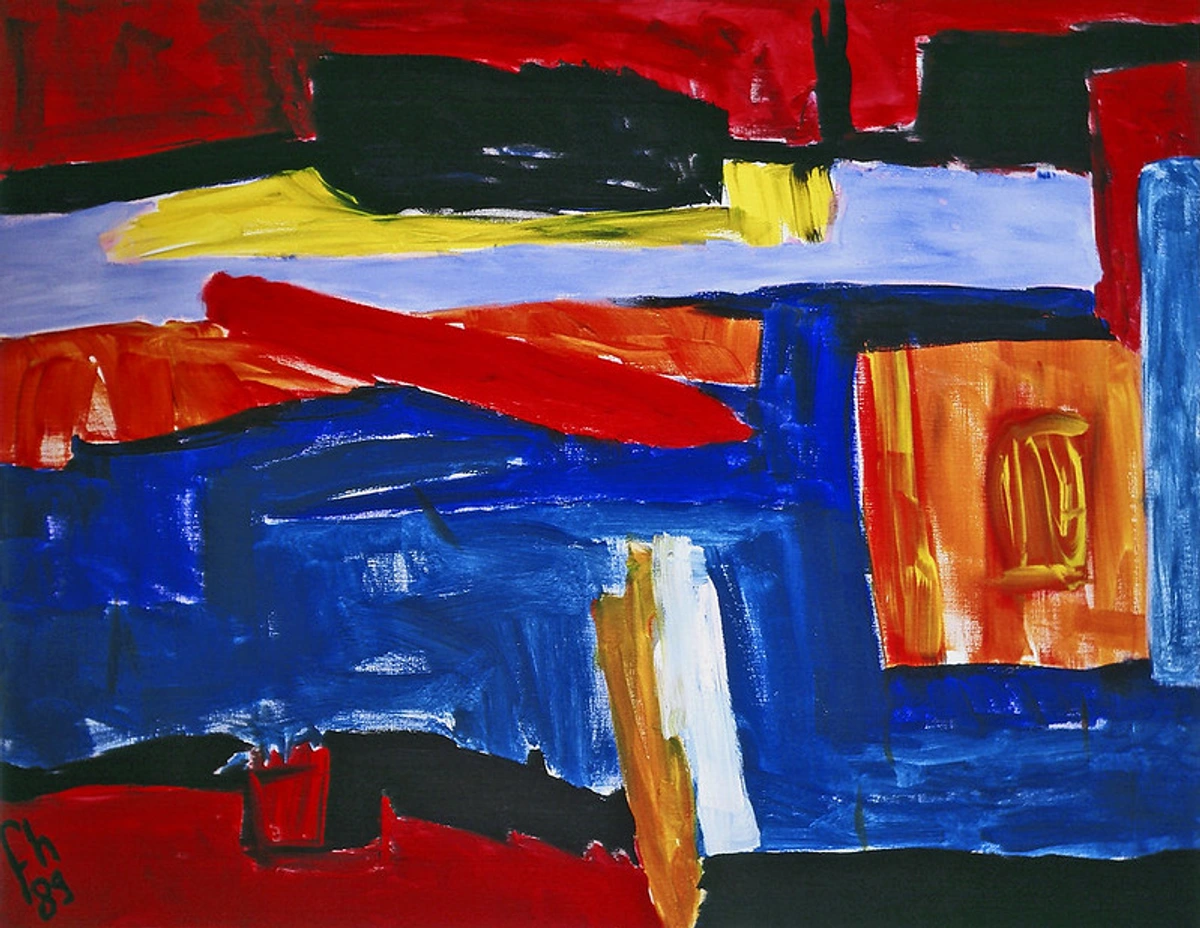
Abstract art, in general, often resonates with the feeling of dreams – the lack of literal representation, the focus on color, form, and emotion. It's like the essence of a dream, rather than a literal depiction. It's about capturing the process or feeling of the subconscious state, allowing the viewer's own mind to make connections, much like interpreting a dream. Learn more about why it's so compelling.
Other styles also touch upon the dreamlike or fantastical. Fantastic Art, for instance, often depicts imaginary worlds and creatures that feel like they've sprung directly from a dream or nightmare. Visionary Art is another related category, often created by self-taught artists, that focuses on inner visions, spiritual experiences, and yes, dreams, resulting in highly personal and often intricate imagery. While dream-inspired art specifically draws from the sleep state, Visionary Art can stem from broader inner experiences, and Fantastic Art often focuses on invented fantasy worlds, though the lines can certainly blur. Even certain forms of Narrative or Figurative art can delve into psychological states and altered realities that echo the dream world.
Beyond specific movements, the exploration of dreams and the subconscious continues in contemporary art, influencing themes of identity, memory, and altered realities across various mediums. Artists like Yayoi Kusama, with her immersive infinity rooms and polka dot motifs, often speak of her work as stemming from hallucinations and inner visions, blurring the lines between waking perception and altered states akin to dreams. Other contemporary artists like Julie Curtiss explore uncanny, often unsettling dreamlike scenarios in her figurative paintings, while Njideka Akunyili Crosby layers personal memories and cultural references in her mixed-media works, creating dense, dreamlike visual narratives. Kiki Smith's work often features mythological and animal imagery that feels deeply connected to archetypal dream symbols. The dream world remains a fertile ground for artists today, constantly inspiring new forms and expressions.
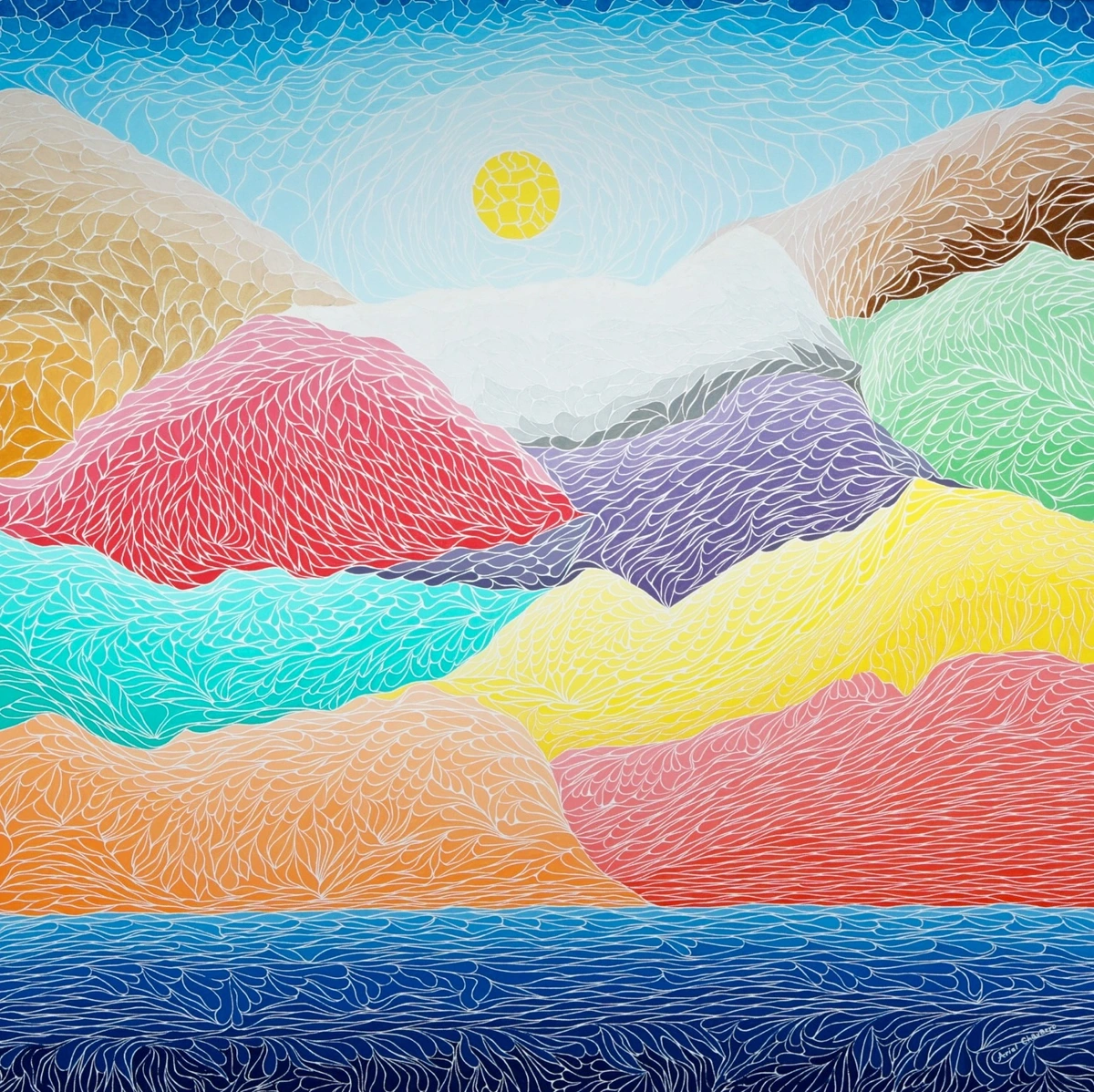
Why Artists Turn to Dreams: A Deeply Personal Source
So, why this enduring fascination? Why do artists keep returning to the well of dreams? For me, it's a deeply personal source, a place where the usual rules don't apply, and unexpected connections are made.
What is it about the subconscious landscape that calls to us?
Tapping into the Unconscious and Unfiltered Creativity
For many, it's about accessing a raw, unfiltered source of creativity. Our conscious minds are full of rules, logic, and self-censorship. Dreams bypass all that. They offer unexpected juxtapositions, bizarre narratives, and powerful imagery that can spark entirely new ideas. It's like getting a direct download from the universe's most imaginative hard drive.
As an artist, I know the struggle of finding inspiration. Sometimes, the most potent ideas come from those moments just before sleep, or the lingering images after waking. It's about letting go of control and seeing what emerges. I've had abstract compositions appear fully formed in that hazy state, or a strange color combination from a dream suddenly feel right for a painting. Just the other night, I dreamt of a vast, empty landscape with a single, glowing geometric shape hovering in the distance. It made no logical sense, but the feeling of quiet awe and the visual contrast were so strong, I immediately sketched it upon waking. It's now the starting point for a new series, influencing the color palette and overall mood. It's a key part of my own artist's journey.
Exploring Emotion and Symbolism
Dreams are rarely just random noise. They're packed with symbolism, often reflecting our deepest fears, desires, and anxieties. Artists can use dream imagery to explore these complex emotions in a way that literal representation might not allow. A recurring symbol in a dream might become a central motif in a painting, carrying layers of personal and universal meaning. Think of the common symbols – water, flight, falling, specific objects or figures – they resonate because they tap into shared human experiences and archetypes, a concept explored by psychologists like Carl Jung. Artists can harness this collective unconscious to connect with viewers on a primal, emotional level. The intensity of emotion in dreams, even if the emotion itself seems mundane in waking life, is often a key element artists try to capture, translating that raw feeling into visual form.
Understanding symbolism in art can really open up how you view these pieces.
Processing the Unseen and Unspeakable
Beyond just exploring emotions, dreams can be a way for the mind to process experiences, traumas, or anxieties that are difficult to confront in waking life. This raw, unprocessed material can emerge in symbolic or abstract forms in dreams. Artists can then use their work as a way to engage with this material, giving form to the formless, making the unspeakable visible. It's a form of internal alchemy, transforming difficult psychological content into something external and potentially healing. This is closely related to the therapeutic potential of art, which we'll explore further.
Dreams as Narrative and Storytelling
Even when fragmented and illogical, dreams often present a kind of narrative. Things happen, characters appear, scenarios unfold. Artists can draw on these dream narratives, translating the strange sequences of events or the interactions between bizarre figures into visual stories. It might not be a linear plot, but the inherent storytelling quality of dreams provides a rich source for creating compelling, albeit often mysterious, visual narratives in their work. Think of the surreal, narrative-like paintings of Leonora Carrington or Remedios Varo. The challenge lies in translating the process of the dream narrative – the sudden shifts, the illogical transitions, the repetition – into a static visual medium.
Dreams as a Source of Insight and Problem-Solving
Have you ever woken up with a sudden clarity about a problem, or a new idea that seemed to come out of nowhere? Dreams aren't just random; they can be our subconscious mind working through issues or making unexpected connections while we sleep. Artists can tap into this. A dream might offer a visual metaphor for a complex idea they're grappling with, or a strange juxtaposition of images could unlock a new approach to a creative block. It's like getting advice from a very strange, wise friend who only speaks in riddles and bizarre visuals. I've certainly had moments where a dream image provided the missing piece to a composition I was stuck on.
Capturing the Uncanny and the Sublime
Dreams often evoke powerful feelings of the uncanny – that strange mix of familiarity and alienness – or the sublime, a sense of awe mixed with terror or profound mystery. These are potent emotional states that are difficult to articulate in words but can be powerfully conveyed through visual art. Artists turn to dreams to access these feelings and translate them onto the canvas, creating works that resonate with the viewer's own experiences of the strange and the wondrous. It's about capturing that shiver down your spine or that breathtaking sense of vastness that a dream can leave you with.
Processing and Distorting Memory
Dreams are notorious for blending and distorting memories, creating new, often illogical narratives from fragments of the past. This process mirrors how memory itself can be fluid and unreliable. Artists can use dream imagery to explore the nature of memory, depicting fragmented scenes, shifting identities, or impossible combinations of past events. It's a way to engage with personal history not as a fixed timeline, but as a malleable, dreamlike landscape. My melting face dream? Definitely felt like my brain was messing with my memories of painting portraits.
The Challenge of Visualizing the Illogical
Let's be honest, trying to explain a dream is hard. Trying to paint one? Even harder! The challenge of translating the fluid, non-linear, often contradictory nature of dreams into a static visual medium is a huge part of the appeal. It pushes artists to experiment with form, composition, and technique. How do you show something that shifts and changes? How do you represent a feeling that has no visual equivalent? It's a fascinating puzzle that forces creative problem-solving. Sometimes I feel like I'm wrestling with smoke, but the struggle itself can lead to unexpected breakthroughs.
Connecting with Universal Experience
While dreams are intensely personal, many themes and images are universal. The feeling of being lost, the joy of flight, encountering strange beings – these resonate across cultures and individuals. By tapping into their own dream world, artists can create work that speaks to the shared human experience of navigating the subconscious, fostering a deep connection with the viewer who recognizes a flicker of their own inner landscape. It's a reminder that despite our individual dream narratives, we share a common language of the unconscious.
The Influence of Mythology and Folklore
Mythology and folklore are rich sources of archetypal imagery and narrative that often overlap with the themes and symbols found in dreams. Artists drawing inspiration from myths – whether ancient pantheons, heroic quests, or cautionary tales – are often tapping into the same collective unconscious that manifests in our sleep. Creatures like dragons, spirits, or trickster figures, and narratives of transformation, journeys to the underworld, or encounters with the divine, appear in both dreams and myths. Incorporating these elements into art can lend a timeless, resonant quality, connecting personal dream visions to broader human stories and psychological patterns.
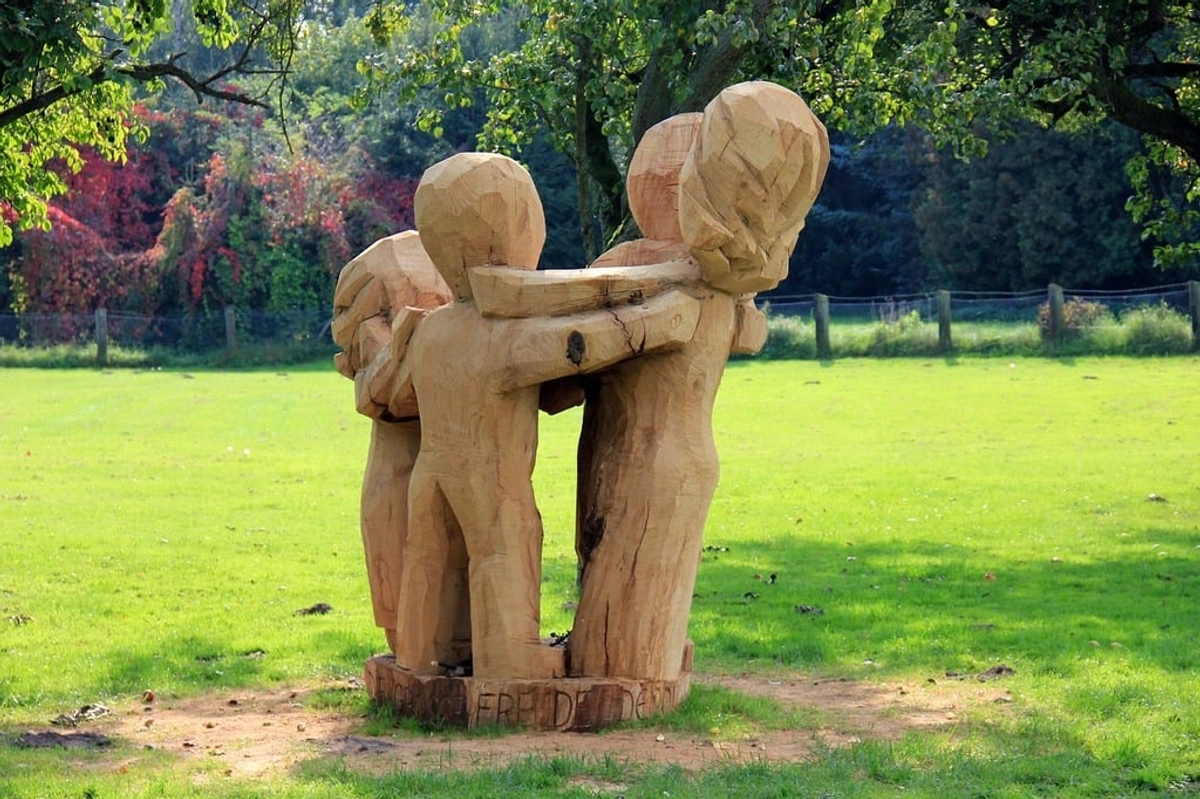
The Visual Language of Dreams: Color, Light, and Perspective
Dreams often defy the rules of waking reality, and artists use visual elements like color, light, and perspective to capture this. Color in dreams can be intensely vivid or strangely muted, often carrying emotional weight rather than representing reality. Artists leverage this, using non-naturalistic palettes to evoke the feeling of a dream – a vibrant red might signify passion or danger, regardless of the object's actual color. Think of the intense hues in Fauvism, which, while not solely dream-inspired, share this emotional use of color. The psychological impact of color, explored in fields like art therapy, is deeply connected to how we experience color in dreams.
Light in dreams can be inconsistent, casting strange shadows or emanating from impossible sources. Artists play with this, creating unsettling atmospheres or highlighting specific elements in illogical ways. Think of the dramatic chiaroscuro in Baroque art, which, while not directly about dreams, uses light and shadow to create intense, sometimes surreal, emotional states. Similarly, perspective can shift dramatically in dreams – objects might appear vast or tiny, spaces might stretch or compress. Artists use distorted perspective, impossible viewpoints, or shifts in scale to convey the disorientation and subjective reality of the dream state. These visual tools are crucial for translating the non-literal, sensory experience of dreaming into a compelling artwork.
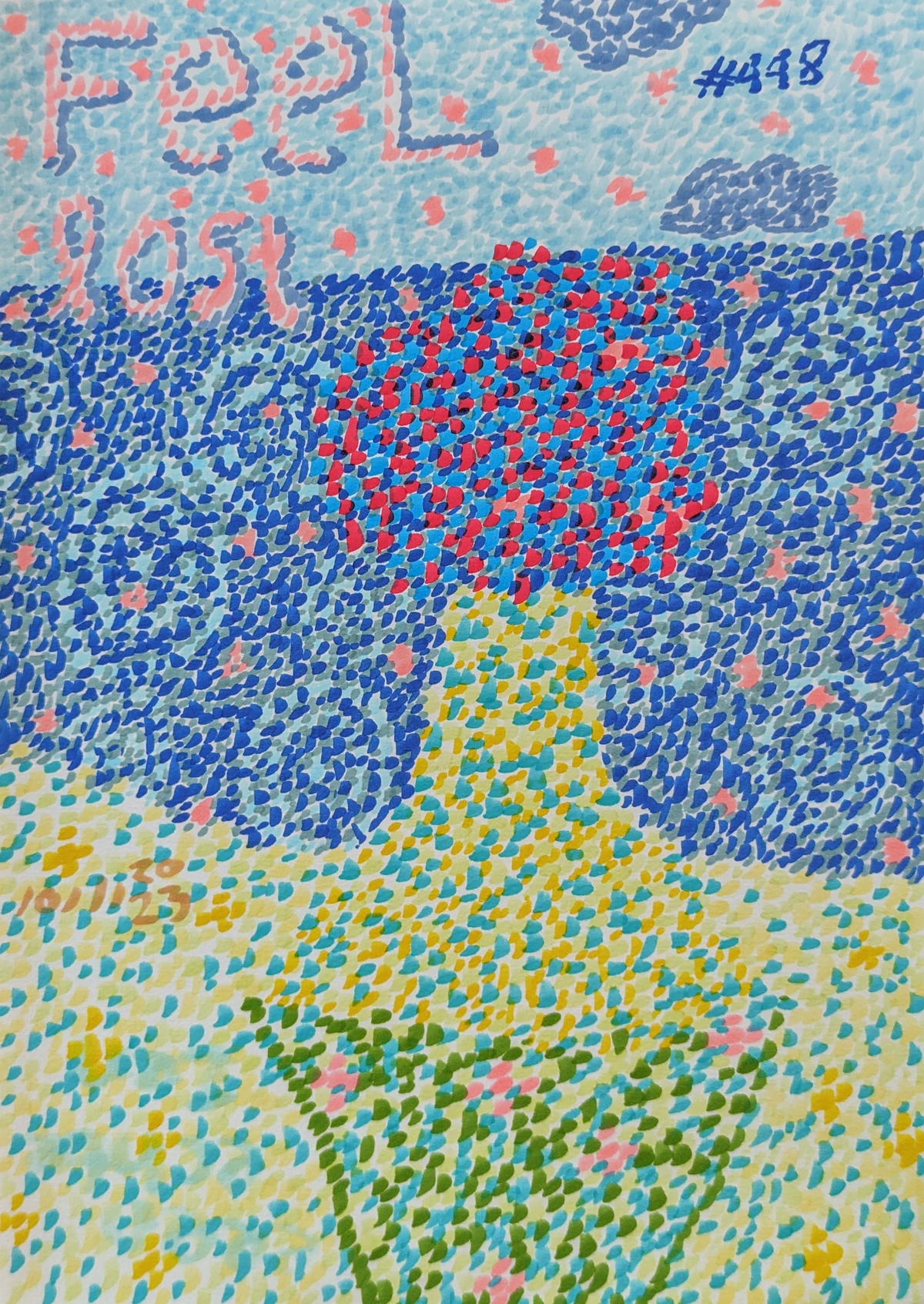
The Viewer's Journey: Connecting with Dream Art
Why are we, the viewers, so drawn to art about dreams? Perhaps it's the recognition of something familiar yet alien, a visual echo of our own nocturnal adventures. Dream art bypasses the rational mind and speaks directly to our emotions and intuition. It invites us to interpret, to project our own experiences onto the canvas, becoming active participants in the artwork's meaning. It can be a mirror to our own subconscious, revealing hidden thoughts or feelings we didn't know we had. Looking at a dreamlike painting can feel like remembering a forgotten dream, sparking a sense of wonder, unease, or profound connection. It's a conversation between the artist's subconscious and your own.
Creating Your Own Dream Art: A Practical Guide
Feeling inspired to try capturing your own dream world? It's a fantastic way to explore your subconscious and boost your creativity. It's also a form of self-discovery, like peering into a hidden room in your mind. Ready to give it a shot? You don't need to be a master technician; the goal is expression and exploration.
Here are some practical steps and ideas for creating your own dream-inspired art:
1. Capture the Fleeting Moments
Dreams fade fast. The most crucial step is capturing them immediately upon waking.
- Keep a Dream Journal/Sketchbook: Place it right by your bed. As soon as you wake up, before the logical mind takes over, jot down keywords, draw quick sketches, or even just write down the feelings the dream evoked. Don't worry about making sense of it yet. Just capture the raw data. Even a single image, a strange phrase, or a strong emotion can be the seed of an artwork. I've found that even messy, half-remembered fragments can unlock something powerful later on.
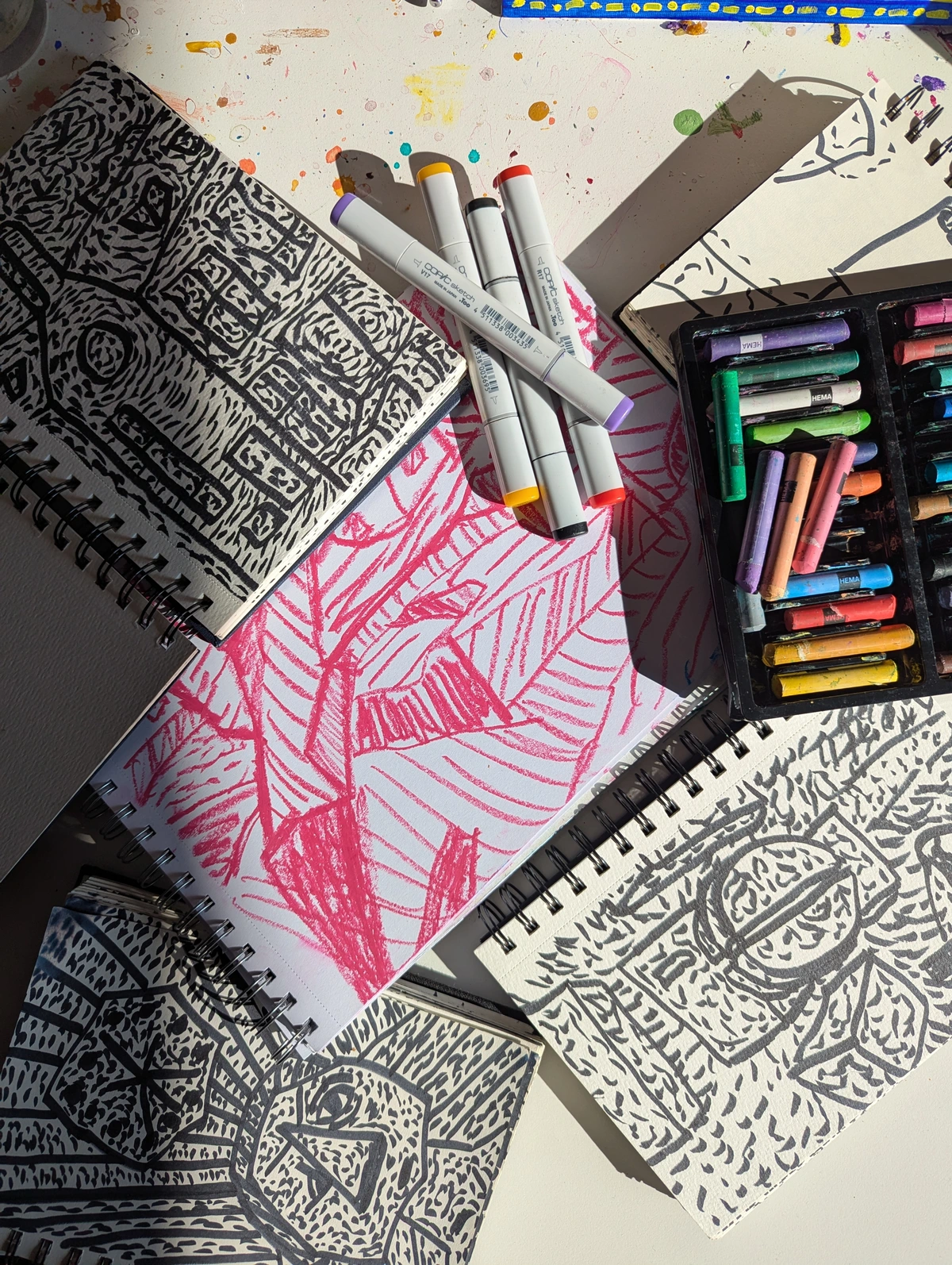
- Record Sensory Details: Beyond visuals, note sounds, smells, textures, tastes, and physical sensations from the dream. These can be powerful starting points for abstract or atmospheric pieces.
- Revisit Old Dreams: Don't just focus on recent dreams. Flip through old dream journals or sketchbooks. Sometimes, images or feelings that didn't make sense at the time can spark new ideas or reveal recurring themes that are ripe for artistic exploration. Have you noticed any symbols, objects, or actions that appear repeatedly in your dreams? These recurring elements can be particularly potent themes to explore in your art, as they often hold deep personal significance.
- Ask Specific Questions: When journaling, try prompting yourself with questions like: What impossible things happened? Were there any shifts in identity or location? What was the dominant feeling? What was the most bizarre image? This can help pull out details beyond the main narrative.
2. Embrace the Illogical and Absurd
Your dream art doesn't have to be a perfect, literal recreation. The power often lies in the strangeness.
- Lean into the Weirdness: If a dream featured a flying teapot and a conversation with your cat about existential dread, lean into it. The illogical is often the most interesting part. Don't censor yourself; the subconscious thrives on unexpected juxtapositions. My talking badger dream? Definitely fodder for a future piece.
- Work with Nightmares: While frightening, nightmares are often potent sources of powerful, raw imagery and emotion. Exploring them artistically can be a way to process fear and transform unsettling visions into compelling art. Think of the intense feelings they evoke. This can be a challenging but ultimately rewarding path, allowing you to confront and externalize deep-seated anxieties through creative expression.
3. Choose Your Medium and Techniques
Different mediums lend themselves well to dreamlike effects. Experiment to find what feels right for the dream you want to express.
Technique | How it Relates to Dreams | Example Application |
|---|---|---|
| Automatic Drawing/Painting | Mimics the unfiltered, non-linear flow of the subconscious | Sketching without looking at the paper, letting the hand move freely. |
| Collage/Assemblage | Creates unexpected juxtapositions and fragmented realities | Combining disparate images or objects to form a new, illogical scene. |
| Layering | Captures shifting realities and hidden meanings | Painting translucent layers, overlaying images digitally, or using mixed media. |
| Fluid Mediums | Evokes swirling, ethereal, or amorphous qualities | Using watercolor, ink, or fluid acrylics to create flowing, unpredictable forms. |
| Digital Manipulation | Allows for easy distortion, blending, and surreal effects | Morphing images, creating impossible landscapes, or applying abstract filters. |
- Drawing: A fundamental and accessible medium for quickly capturing initial dream fragments, shapes, and ideas before they fade. Sketching allows for spontaneity and direct translation of fleeting images.
- Fluid Mediums: Painting, especially with fluid mediums like watercolor or ink, can capture the swirling, ethereal quality of dreams.
- Collage and Assemblage: Collage is excellent for creating those jarring, unexpected juxtapositions found in dreams, bringing together disparate elements. Assemblage art, using three-dimensional found objects, can bring dream objects into physical reality.
- Layering: Layering techniques in painting or digital art can create depth and a sense of shifting reality, mimicking the way dream scenes can morph.
- Automatic Techniques: Automatic drawing or painting, letting your hand move freely without conscious direction, is a direct way to tap into subconscious imagery. Try a timed session: Set a timer for 5-10 minutes. With your eyes closed or unfocused, let your hand move freely across the paper, making marks without conscious thought. See what shapes, lines, or textures emerge. This is a direct application of the Surrealist automatism technique, aiming to bypass the rational filter, unlike simple doodling which can still be quite conscious. It's about letting the subconscious speak directly through your hand. I remember one session where I just let my pen wander, and this strange, tangled creature emerged that felt exactly like the anxiety I'd been carrying around all day. It wasn't pretty, but it was real.
- Digital Art: Digital tools allow for easy layering, blending, and manipulation to create surreal or abstract effects, offering endless possibilities for visualizing the impossible.
- Sculpture/Mixed Media: Bringing dream objects or figures into three dimensions can give them a powerful, tangible presence.
- Sound and Text: Don't limit yourself to visuals! Dreams are often multi-sensory. Consider incorporating sound elements (recordings, music) or text (dream fragments, automatic writing) into your artwork, either directly or as inspiration for visual pieces. This can add layers of narrative and atmosphere that pure visuals might miss.

If you're looking to start making art, check out my guide on how to make abstract art – it's a great way to start exploring non-representational imagery that often feels dreamlike.
4. Focus on Feeling, Not Just Image
Sometimes the most powerful part of a dream isn't what you saw, but how it felt. Was it anxious? Joyful? Confusing? Try to capture that emotional atmosphere in your art through color, texture, and composition, even if the imagery is abstract or symbolic. The emotional truth of the dream is often more important than the literal details. Consider how artists use color to evoke emotion.
5. Explore Different Dream Types and Structures
Consider how different types of dreams might inspire different approaches. A recurring dream might become a series exploring variations on a theme. A vivid nightmare could lead to intense, dramatic works, perhaps using dramatic art styles. A lucid dream, where you have some control, might inspire interactive or layered pieces. Even mundane dreams can be interesting – what does the absurdity of dreaming about doing laundry reveal? Also, think about the structure of the dream itself – the sudden shifts in scene, the illogical transitions, the repetition of certain actions or images. How can you translate that process into your art's composition or form? I once had a dream that kept looping back to the same strange hallway, and I tried to capture that feeling of cyclical, inescapable space in a series of layered prints.
6. Reflect on Personal Symbolism
While universal symbols exist, your dream symbols are deeply personal. After capturing the raw dream, take time to reflect on what the images, objects, or scenarios might mean to you. What were you experiencing in your waking life? What emotions were present? Consciously exploring this personal symbolism after the initial capture can add layers of meaning and intention to your artwork. Keeping a dream journal alongside your art practice is incredibly helpful for this ongoing dialogue with your subconscious.
7. Experiment with Scale and Perspective
Dreams often play fast and loose with scale and perspective. Objects can be enormous or tiny, spaces can stretch or compress in impossible ways. Don't be afraid to experiment with this in your art. Distort proportions, create impossible viewpoints, or shift scale dramatically within a single piece to capture that disorienting, subjective feeling of the dream state. This directly ties into the visual language of dreams we discussed earlier.
8. The Therapeutic Power of Dream Art
Creating art based on your dreams can be a profoundly therapeutic practice. It provides a safe space to externalize and process difficult emotions, anxieties, or unresolved experiences that surface in your sleep. Giving form to these inner landscapes can offer new perspectives, facilitate healing, and provide a sense of release. It's a form of art therapy you can do yourself, transforming internal chaos into external expression. For example, repeatedly drawing a disturbing image from a nightmare might lessen its power over time, or creating a piece based on a joyful dream could help anchor that positive feeling.
Considerations When Working with Dream Imagery
While dream art is often deeply personal, sometimes dreams feature other people – friends, family, or even strangers. If you plan to share your dream-inspired art publicly, especially if it depicts recognizable individuals or potentially sensitive scenarios, it's worth considering the ethical implications. Are you comfortable representing others in this way? Would they be? It's a nuanced area, but being mindful of how your personal subconscious explorations might impact others is important.
Dreams in Other Creative Fields
The influence of dreams isn't confined to the visual arts. Their illogical narratives, potent symbolism, and emotional intensity have long inspired creators across various disciplines.
- Literature: Writers like Franz Kafka (The Metamorphosis), Jorge Luis Borges (Ficciones), and Haruki Murakami (Kafka on the Shore) weave dream logic, surreal scenarios, and symbolic imagery into their narratives, blurring the lines between reality and the subconscious. The stream-of-consciousness technique, used by authors like James Joyce, also mirrors the non-linear flow of thought found in dreams.
- Film: Filmmakers like David Lynch (Mulholland Drive, Eraserhead), Federico Fellini (8½), and Alejandro Jodorowsky (El Topo) are masters of translating dream logic and surrealism onto the screen, creating visually stunning and often unsettling cinematic experiences that defy conventional narrative structure. The use of non-linear editing, symbolic imagery, and distorted realities in film often directly draws from the dream state.
- Music: While less direct, dreams can inspire musical compositions through their emotional atmosphere, rhythmic patterns, or even specific auditory hallucinations. Composers might seek to evoke the feeling of a dream or nightmare, or use repetitive, cyclical structures that echo dream narratives. Think of the ethereal, shifting soundscapes in Debussy's work or the immersive, sometimes unsettling textures of ambient music artists like Brian Eno or Aphex Twin. Experimental music or ambient soundscapes can sometimes aim to replicate the sonic environment of altered states.
- Theatre and Performance: The stage offers a unique space to explore the fluid and symbolic nature of dreams. Set design, costumes, and non-linear narratives can create immersive, dreamlike experiences for the audience. Performance art, in particular, with its focus on the body, ritual, and altered states, often draws heavily on subconscious imagery and dream logic.
This cross-disciplinary influence highlights the fundamental human connection to the dream world as a source of profound creative material, proving its power extends far beyond the canvas.
Contemporary Dream Art and New Mediums
The exploration of dreams in art hasn't stopped with Surrealism. Contemporary artists continue to draw from the subconscious, often using new technologies and mediums to visualize inner worlds in innovative ways.
- Digital Art and Animation: Digital tools allow for unprecedented manipulation of imagery, making it easier than ever to create fluid, morphing, and illogical scenes that perfectly capture the essence of dreams. Animation can bring dream narratives to life in ways static mediums cannot, depicting transformations and impossible movements. Artists working with generative art or AI can even explore algorithms that mimic the unpredictable nature of dream imagery.
- Installation and Immersive Art: Artists create environments that viewers can step into, designed to evoke the feeling of being inside a dream. These installations often use light, sound, and spatial distortion to create disorienting or transportive experiences, mirroring the immersive nature of the dream state. Think of Yayoi Kusamas Infinity Rooms, which, while not explicitly about dreams, certainly evoke a sense of altered reality and boundless inner space. Artists like Pipilotti Rist create immersive video installations that feel like swimming through a vibrant, sensual dream.
- Performance Art: Performance artists use their bodies and actions to explore psychological states, often drawing on dream logic, ritual, and symbolic gestures to create powerful, ephemeral works that resonate with subconscious themes. Artists like Marina Abramović explore altered states of consciousness and endurance that can feel akin to navigating a dream landscape.
- Video Art: Video allows artists to create non-linear narratives, layer imagery, and use visual effects to mimic the fragmented and fluid nature of dreams. Artists like Bill Viola explore themes of consciousness, birth, and death through slow-motion, dreamlike video sequences.
These contemporary approaches demonstrate the enduring power of the dream world as a source of inspiration, constantly pushing the boundaries of how we can visualize the subconscious.
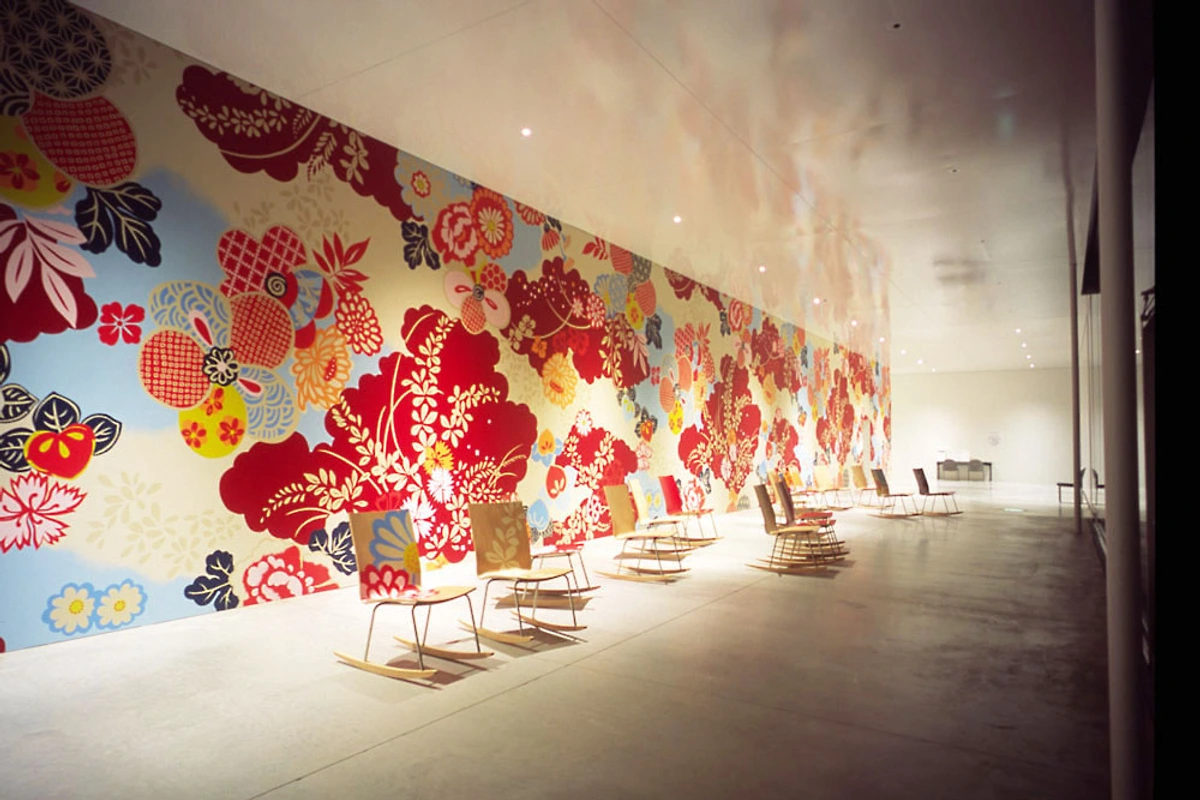
Interpreting Dream Art
So, you're standing in front of a piece of art that feels like a dream. How do you approach it? Unlike a realistic painting, dream art often resists a single, definitive interpretation. That's part of its power and its challenge.
- Trust Your Intuition: The most important tool is your own feeling and intuition. What emotions does the piece evoke? Does it remind you of anything from your own dreams or experiences? Your personal connection is valid and often the most insightful starting point.
- Look for Symbols: Identify recurring images, objects, or figures. While some symbols are universal (water, birds, houses), others might be deeply personal to the artist. Consider the context of the piece and the artist's background if you know it, but don't get stuck trying to find a 'correct' meaning for every element. Remember that cultural background can heavily influence symbolism, so what a symbol means in one culture might differ in another. Exploring how different cultures depict symbols in art can offer fascinating insights.
- Consider the Atmosphere: Pay attention to the use of color, light, and composition. Do they create a sense of unease, wonder, chaos, or calm? The overall mood can tell you a lot about the dream state the artist is exploring.
- Embrace Ambiguity: Dream art thrives on ambiguity and multiple possible meanings. Don't feel pressured to 'solve' the painting. Allow yourself to sit with the questions it raises and the feelings it evokes. It's more like interpreting a poem than a literal illustration.
- Research the Artist: If possible, learn about the artist's intentions, their interest in dreams, or any personal symbolism they've discussed. This can provide valuable context, but remember that even the artist might not fully understand everything that emerges from their subconscious.
Ultimately, interpreting dream art is a dialogue between the artist's inner world and your own. It's an invitation to explore the shared landscape of the subconscious.
Finding and Collecting Dream-Inspired Art
So, you're captivated by the art of the subconscious? If you're drawn to the mysterious world of dream art, there are plenty of places to find pieces that resonate with you. It's like finding visual echoes of your own inner world.
How do you find art that speaks the language of your subconscious?
- Where to Look: Major museums with strong Surrealism collections are a must-visit. But don't stop there. Look for contemporary artists who explore themes of the subconscious, memory, and imagination. Styles like Visionary Art, Psychedelic Art, or certain forms of Narrative or Figurative art that delve into psychology often feature dream-inspired elements. Online galleries and artist websites are great places to discover new talent. Sometimes, you find the most unexpected gems in unexpected places like cafes or boutiques. Look for artists who explicitly mention dreams, the subconscious, mythology, or altered states in their artist statements or biographies. Consider platforms specifically dedicated to surreal, fantasy, or lowbrow art, as these often feature artists working directly with dream imagery. Look for artists who use symbolic language or personal mythology in their work, as these often overlap heavily with dream-inspired themes. Don't forget to explore local art galleries and art fairs; you might discover incredible emerging artists working with dreamlike themes right in your community.
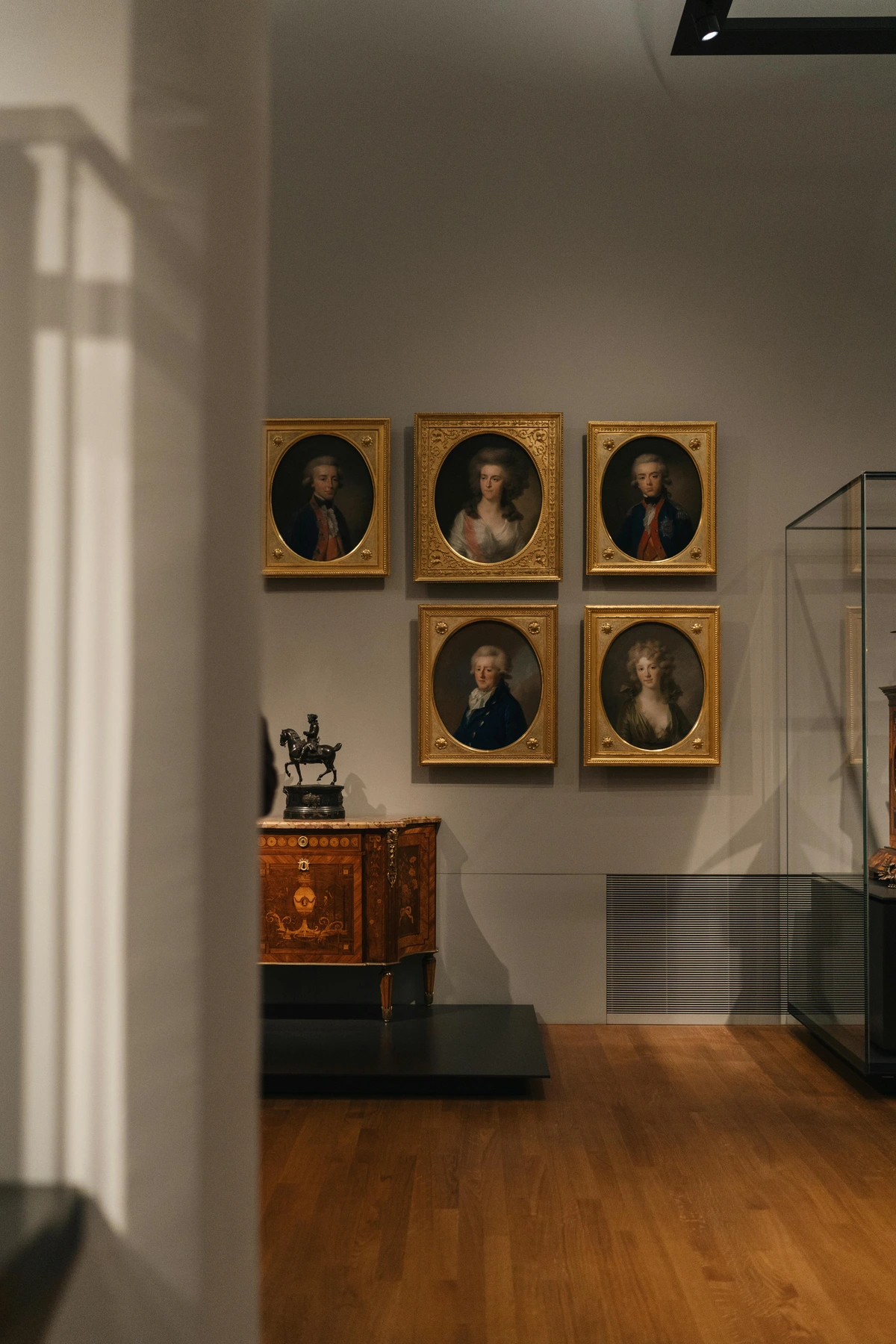 If you're new to collecting, my personal guide to buying art might be helpful.
If you're new to collecting, my personal guide to buying art might be helpful. - What to Look For: When choosing dream-inspired art, trust your gut. Does the piece evoke a feeling? Does it remind you of a dream you've had? Does it spark your imagination? Art about dreams is deeply personal, both for the artist and the viewer. Find something that speaks to your subconscious. Don't worry if you can't logically explain why you like it; sometimes, the connection is purely intuitive, like understanding a dream on a non-verbal level. Pay attention to the use of color, composition, and symbolism – do they create a sense of unease, wonder, or mystery that resonates with your own dream experiences? Remember, sometimes the interpretation is less about finding a definitive meaning and more about the feeling or atmosphere the piece evokes, much like a dream itself.
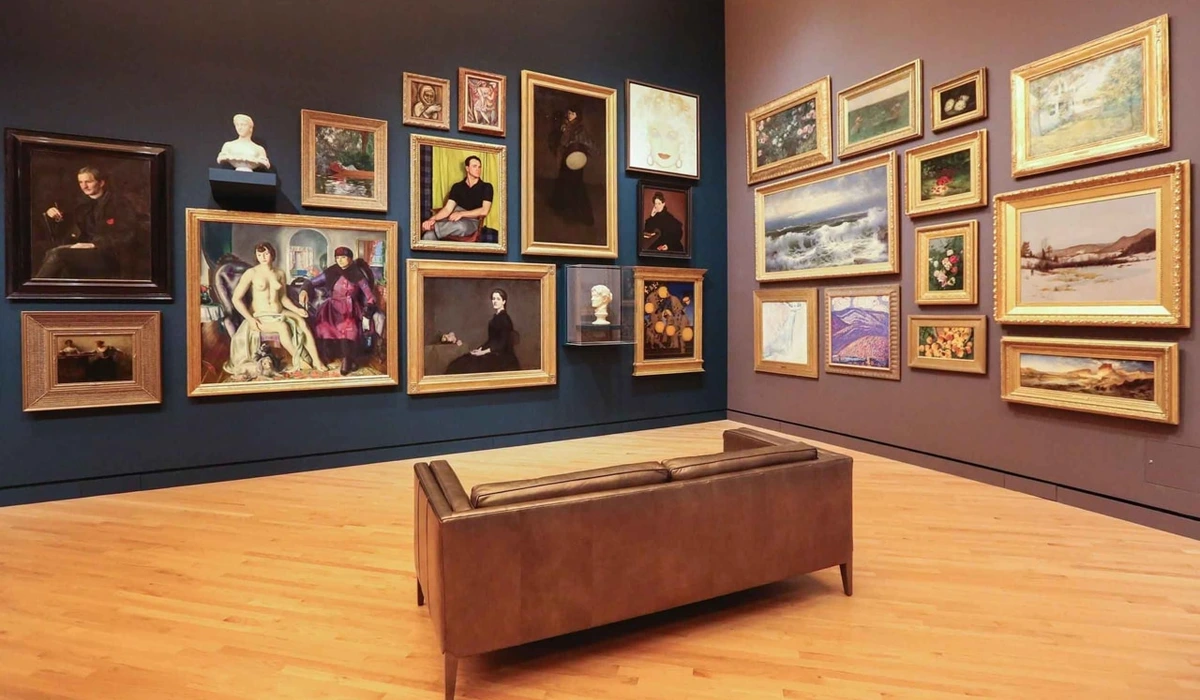 Remember, art is about connection. Whether it's a piece that reminds you of a vivid dream or simply one that makes you feel something, that's the right piece for you. If you're thinking about adding art to your home, I have guides on choosing and displaying art at home and even how to choose art based on room color.
Remember, art is about connection. Whether it's a piece that reminds you of a vivid dream or simply one that makes you feel something, that's the right piece for you. If you're thinking about adding art to your home, I have guides on choosing and displaying art at home and even how to choose art based on room color.
FAQ: Art About Dreams
Still scratching your head about some of this? Let's tackle a few common questions.
Q: Is all Surrealism about dreams? A: While dreams were a major inspiration and source material for Surrealists, the movement also explored other aspects of the unconscious, like automatic writing and chance encounters. So, not all Surrealism is a direct depiction of a dream, but the dream state heavily influenced their approach and techniques like automatism.
Q: How can I interpret dream art? A: There's no single right way! Start by looking at the symbols, colors, and overall mood. What feelings does it evoke in you? Think about common dream symbols, but also consider that the artist might be using personal symbolism. Don't be afraid to let your own imagination wander. Sometimes, the interpretation is less about finding a definitive meaning and more about the feeling or atmosphere the art raises, much like trying to explain a dream itself. Your personal connection and interpretation are key.
Q: Are there contemporary artists working with dream themes? A: Absolutely! Many contemporary artists continue to explore the subconscious, memory, and altered states of reality, often drawing inspiration from dreams in various forms, from painting and sculpture to video art and installations. Artists like Yayoi Kusama, Julie Curtiss, Njideka Akunyili Crosby, and Kiki Smith are just a few examples. Look for artists who mention psychology, symbolism, or the unconscious in their artist statements.
Q: Can making art help me understand my dreams? A: For sure! As mentioned in the "Creating Your Own Dream Art" section, the act of creating, whether it's drawing, painting, or writing, can help you process the imagery and emotions from your dreams. It gives them a tangible form and can reveal connections you might not have seen otherwise. It's a form of art therapy you can do yourself. Putting the dream outside your head can offer new perspectives.
Q: How do I interpret the personal symbolism in my own dream art vs. another artist's? A: Interpreting your own dream art is a deeply personal process of self-discovery. Your symbols are unique to you, stemming from your experiences and emotions. Researching common symbols can be a starting point, but the real meaning comes from your own reflection and journaling. When interpreting another artist's dream art, you're engaging in a dialogue with their subconscious. Look for universal symbols, consider the artist's background and cultural context, and most importantly, pay attention to how the art makes you feel. It's less about finding the 'correct' interpretation and more about the connection and resonance you experience.
Q: Can creating art based on dreams be therapeutic? A: Yes, absolutely. As discussed earlier, engaging with dream imagery and emotions through art can be a powerful way to process difficult feelings, gain insight into your subconscious, and express things that are hard to put into words. It can be a very cathartic and self-soothing practice.
Q: Do different cultures interpret dreams and their symbols differently in art? A: Yes, absolutely. While some symbols might have universal resonance (like water or flight), the specific meanings and artistic representations of dreams vary significantly across cultures, reflecting diverse belief systems, mythologies, and social contexts. Exploring how different cultures depict symbols in art can offer fascinating insights.
Q: What's the difference between art inspired by dreams, imagination, fantasy, or altered states? A: Great question! While there's overlap, the source differs. Dream-inspired art specifically draws from the involuntary, often illogical narratives and imagery of sleep. Imagination is conscious creation. Fantasy often builds structured, fictional worlds. Art from altered states (like those induced by substances) stems from different physiological and psychological experiences than typical dreams, though they can share surreal or visionary qualities. Dream art is unique in its direct link to the subconscious processing that happens during sleep.
Q: How does memory relate to dream art? A: Memory and dreams are deeply intertwined. Dreams often process and recontextualize memories, sometimes presenting them in fragmented, distorted, or symbolic ways. Artists drawing on dreams may also be exploring the nature of memory itself – how it shifts, fades, and combines with imagination. Art that feels dreamlike can often evoke the feeling of a half-remembered memory, blurring the lines between past experience and subconscious processing.
Q: What role does color play in dream art? A: Color is incredibly powerful in dream art, often used non-realistically to convey emotion, atmosphere, or symbolic meaning rather than literal representation. Vivid, saturated colors can reflect intense feelings or surreal landscapes, while muted or monochromatic palettes might evoke a sense of unease, mystery, or specific emotional states. Artists use color to capture the feeling of a dream, which is often more impactful than its literal visual details.
Q: What is the biggest challenge artists face when creating dream art? A: The inherent difficulty lies in translating the fluid, non-linear, and often contradictory nature of dreams into a static visual medium. Dreams shift, morph, and defy logic in ways that are hard to pin down on a canvas or in a sculpture. Capturing that feeling of illogical transformation is a significant artistic challenge.
Conclusion: The Enduring Mystery
Art about dreams reminds us that there's a vast, often unexplored landscape within our own minds. It's a place of infinite possibility, where logic takes a holiday and emotions speak in vivid, symbolic languages. Whether you're creating it or simply viewing it, dream art invites you to step outside the ordinary and embrace the beautiful, bewildering mystery of the subconscious.
It's a reminder that the most profound art often comes from the deepest, most personal places. And sometimes, those places are only accessible when we close our eyes. For me, my own art often feels like a waking dream, a translation of that inner world onto the canvas. It's a continuous journey of discovery. Perhaps you'll even find a piece that resonates with your own dream world in my art for sale.
If you're interested in exploring more art that delves into the human experience, check out my articles on art about love, art about loss, or even art about anxiety.
Sweet dreams... and even sweeter art!




